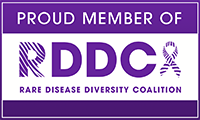
Nearly 90% of those with scleroderma have Raynaud’s symptoms. This is why Raynaud’s can be a “red flag” that helps lead to diagnosis and treatment of scleroderma. And for Aneila, dx 2021, this was exactly the case. “Raynaud’s was actually my first symptom,” she shared with us. After that, she started experiencing skin discoloration, extreme fatigue, and major pain in her muscles and knees.
Unfortunately, getting to a scleroderma diagnosis wasn’t straightforward. “I visited 3 different doctors who dismissed me with fatty liver and sent me away,” she says. “I was only getting worse, and my face started to feel tight.” Finally, she found answers in 2021, when she met with “a rheumatologist who did a lot of tests and diagnosed me with limited scleroderma.”
Those early days were tough for Aneila, not only physically but emotionally. “I had never heard of scleroderma before I was diagnosed and googled it,” she says. “I remember feeling so alone because anyone I would ask would say they had never heard of it either.”
With support from her rheumatologist and appropriate medications, Aneila is now at a more stable place with her scleroderma. And she’s found scleroderma research as a source of hope along the way.
“Scleroderma research is extremely important for me because when I was diagnosed, all I felt was fear of the unknown,” Aneila shares. Discoveries are critical, and she wants everyone to know how important research is. “There is not much information as to why it happens, how to control it, and most importantly how to cure it.”
Today, Aneila shares her story to help others. “Scleroderma has definitely changed my life, but for the better,” she says. “I am more conscious about the decisions I make in my life and the things I allow to affect me.” Her goal in spreading awareness? That “others don’t feel as lonely as I did when I was diagnosed.”

